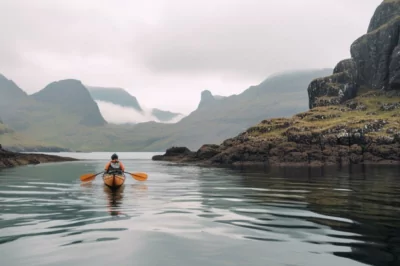
North Sentinel Island: The Last Frontier of Human Isolation
In a world that’s increasingly connected, where everything is merely a click away, it’s fascinating that there are still corners of our planet shrouded in mystery? Today, we are journeying into one such place – the enigmatic North Sentinel Island.
It’s a land that time seemingly forgot, an island as shrouded in mystery as the bottom of the ocean or the dark side of the moon. Hold on tight, because we’re about to embark on an adventure of a lifetime, exploring the unknown and the untamed.
The Location: Where on Earth is North Sentinel Island?
So, where is this intriguing place located? Tucked away in the shimmering waters of the Bay of Bengal, North Sentinel Island is one of the Andaman and Nicobar Islands, an archipelago administered by India.
This remote island, about the size of Manhattan, sits almost 1,300 kilometers away from the Indian mainland and around 600 kilometers from Myanmar’s coastline. Despite its proximity to popular tourist destinations, the island remains untouched by modern civilization. You’d be hard-pressed to find it on your average travel itinerary or holiday brochure!
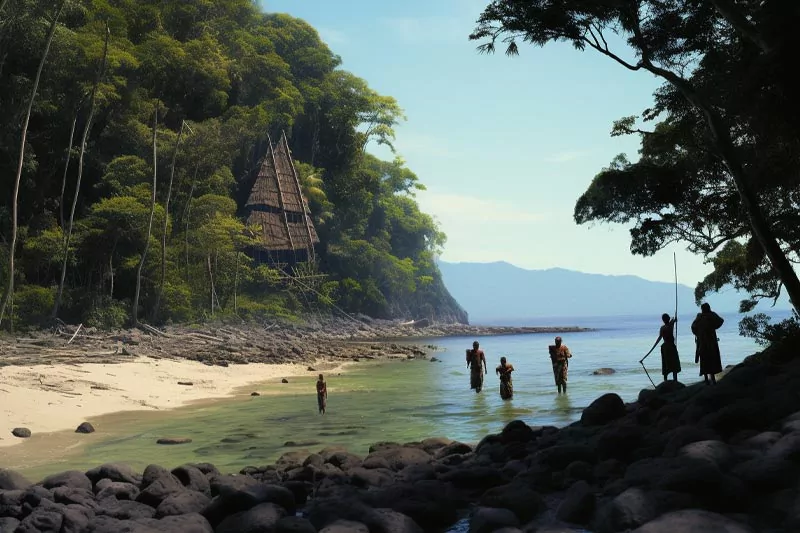
The Uncontacted: Who are the Sentinelese?
Having whet your curiosity about the location, let’s venture deeper into the mystery and talk about the inhabitants of this island, the Sentinelese tribe.
These indigenous people, estimated to number anywhere from a few dozen to a few hundred, are known as the most isolated tribe in the world. Little is known about their language, culture, or way of life, simply because they have remained virtually untouched by modern society.
For thousands of years, the Sentinelese have lived in seclusion, fiercely protecting their territory and rejecting any attempts at contact from the outside world.
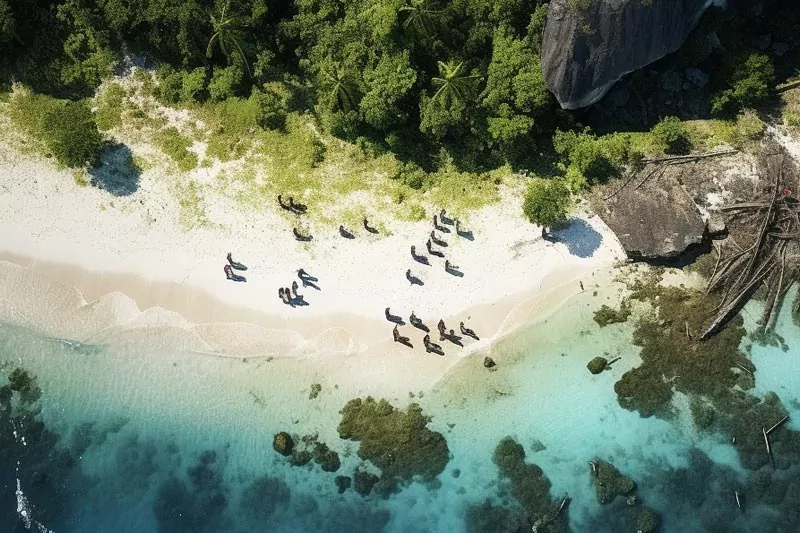
They represent a living link to our prehistoric past, a society that subsists on hunting, gathering, and fishing, oblivious to the wheel’s invention, let alone the internet! They’re a potent reminder that even as the world advances at breakneck speed, some communities remain guardians of an ancient way of life.
The Land: A Glimpse of the Island’s Topography
Now that we know where North Sentinel Island is located and who inhabits it, let’s move on to another intriguing aspect – its geography and topography.
Situated amidst the sparkling azure waters of the Bay of Bengal, North Sentinel Island spans around 60 square kilometers. This might seem small, but for the Sentinelese, it’s a world unto itself.

Imagine thick, verdant jungles obscuring the view of everything, save for the occasional glint of a sunbeam finding its way through the dense foliage.
The dense forests are not just a shield for the Sentinelese, but also their provider, teeming with resources that the tribe depends on. The coastal areas are ringed with white sandy beaches and vibrant coral reefs, adding an idyllic charm to the wilderness of the interiors.
The Challenges: Why is North Sentinel Island Unreachable?
Moving to the question that’s probably at the forefront of your mind: Why is North Sentinel Island virtually unreachable? The answer lies in a potent combination of natural and human factors.
- Firstly, the island is surrounded by treacherous reefs, which makes navigating to it exceptionally risky. These reefs have claimed the hulls of more than a few ships in the past, creating a natural barrier that protects the Sentinelese from the outside world.
- Secondly, there’s the tribe itself. The Sentinelese are fiercely protective of their land and privacy, often greeting outsiders with a flurry of arrows. Their hostility towards external contact has earned them a reputation that further discourages any interaction.
- Lastly, there are legal restrictions. The Indian government has established a 5-nautical-mile exclusion zone around the island. This is in part to respect the wishes of the Sentinelese, and also to protect them from diseases to which they likely have no immunity.
Incidents Over the Decades: Attempts to Contact the Sentinelese
Who went to North Sentinel Island? Despite these challenges, there have been several attempts to contact the Sentinelese over the years, albeit with mixed results.
- In 1974, a National Geographic film crew arrived near the island, only to be greeted by a volley of arrows. One of them even struck the director!
- In 2006, two fishermen, who accidentally strayed too close to the island, were tragically killed by the tribe. The incident sparked a global debate on the rights of such uncontacted tribes and their protection.
- Perhaps the most infamous incident occurred in 2018, when a young American missionary, John Allen Chau, illegally visited the island in an attempt to convert the tribe. His misguided venture ended in his death, and once again brought North Sentinel Island into the global spotlight.
These incidents serve as stark reminders of the Sentinelese’s staunch resistance to outside contact and the lengths they will go to preserve their way of life. They also underscore the importance of respecting the tribe’s autonomy and the laws in place to protect them.
Cultural Preservation: Why the Sentinelese Must be Left Alone
In an age where cultural assimilation is increasingly common, North Sentinel Island stands out like a beacon of resolute autonomy. But why must the Sentinelese be left alone?
Primarily, there’s the risk of disease. The tribe has lived in isolation for thousands of years, and as a result, they lack immunity to common illnesses like the flu or measles.
Contact with the outside world could potentially introduce pathogens against which they have no defense, resulting in catastrophic consequences.
Furthermore, forcing contact could cause immense cultural disruption. The Sentinelese have their unique customs, language, and ways of life that deserve respect and preservation. Contact with modern civilization could lead to the erosion of this unique culture, a loss that would be irreplaceable.
The Role of the Indian Government: Policies and Protection
As custodians of the land, the Indian government plays a crucial role in protecting North Sentinel Island and its inhabitants.
It has established a 5-nautical-mile exclusion zone around the island to ensure no unauthorized contact with the Sentinelese. The government’s stance has shifted over the years from attempting contact to preserving the tribe’s isolation and respecting their autonomy.
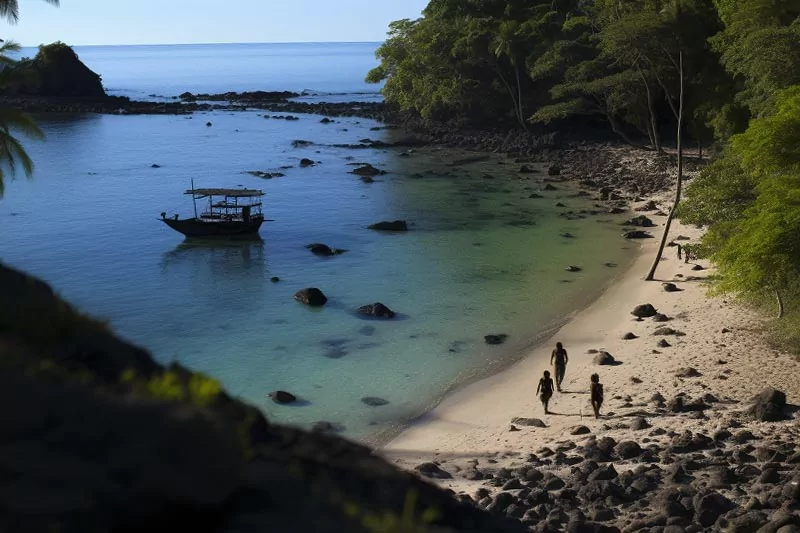
Moreover, any act that endangers the Sentinelese and their habitat is punishable by Indian law. These stringent measures demonstrate India’s commitment to safeguarding the tribe’s well-being and preserving this unique cultural heritage for future generations.
Ethical Tourism: Observing Boundaries and Respecting Cultures
When we think of tourism, visions of pristine beaches, verdant landscapes, and exotic cultures often spring to mind. While these elements are certainly alluring, it’s essential to balance our curiosity and desire for exploration with respect for indigenous cultures and their privacy.
North Sentinel Island, with its aura of mystery, might be a fascinating place, but it is not a tourist destination. The laws prohibiting access are in place for a reason and should be respected. In doing so, we contribute to the preservation of the Sentinelese culture and the well-being of its people.
Ethical tourism is all about respecting the places we visit and the people who inhabit them. It’s about understanding that some destinations, like North Sentinel Island, are off-limits, and for good reasons.
In the grand scheme of things, our responsibility as global citizens is to protect and respect these boundaries, no matter how fascinating the culture or place may seem.
The Fascinating Unknown: Questions We May Never Have Answers To
Part of the allure of North Sentinel Island is the veil of mystery that surrounds it. We know so little about the Sentinelese – their language, their societal structure, their customs, their beliefs. And while our curiosity may tempt us to seek answers, there’s something poetic about these questions remaining unanswered.
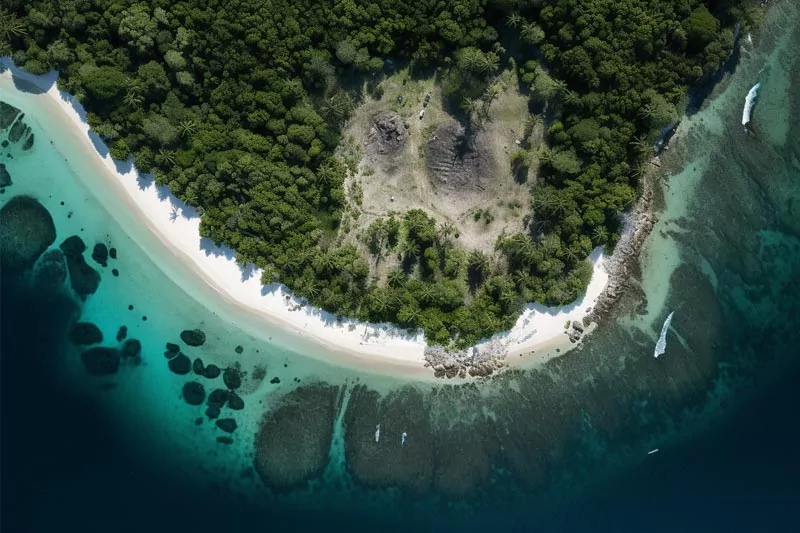
How have the Sentinelese managed to remain so isolated in our hyper-connected world? What secrets does their language hold? How do they perceive the outside world? The list of questions is endless, and the answers are perhaps destined to remain the island’s secret.
Conclusion
In conclusion, North Sentinel Island is more than just an isolated piece of land in the Bay of Bengal. It’s a symbol of a time gone by, a testament to cultural preservation and human resilience.
The Sentinelese people have a lot to teach us about respecting boundaries and preserving diversity.
In our quest for knowledge and connection, let’s not forget that some mysteries are meant to stay that way – respected, revered, and untouched.







